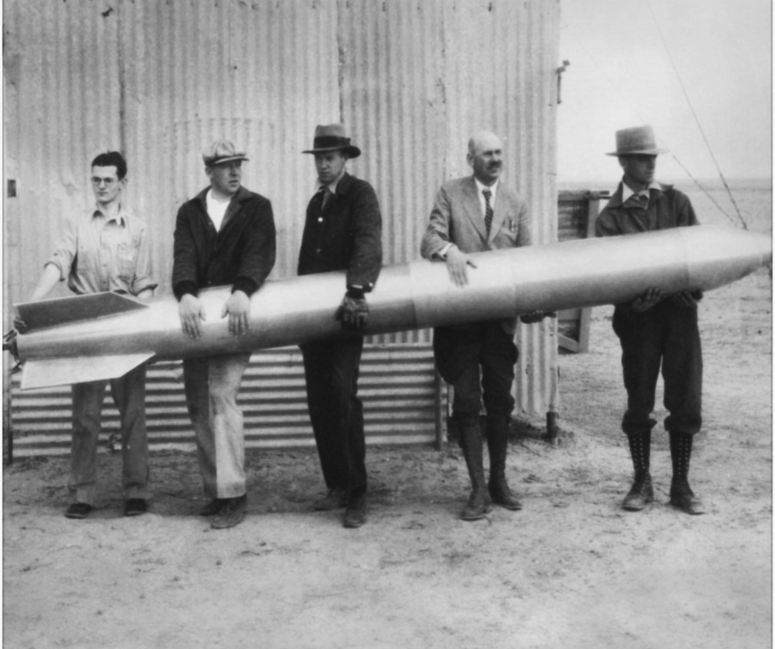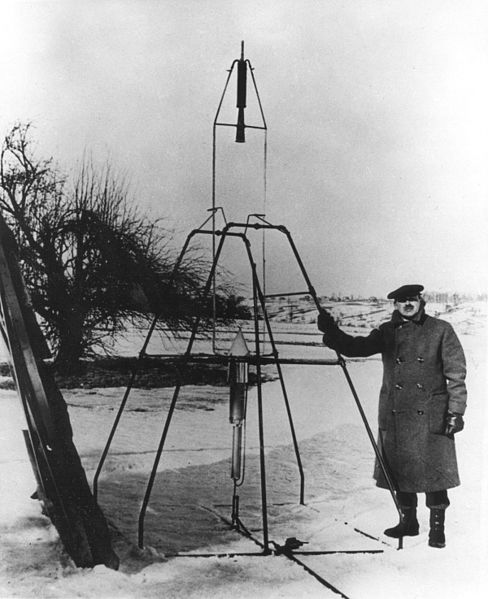Some had too little faith in Robert Goddard and his rockets, but Captain Claude Collins had too much. The president of the Aviators’ Club of Pennsylvania offered, nearly a century ago, to be blasted to our neighboring planet, fueled in his dreams to a good extent by Goddard’s exciting work. From an article that contains a telegraph from the would-be spaceman in the February 5, 1920 New York Times:
“By Telegraph to the Editor of The New York Times.
PHILADELPHIA–In order to aid science and arouse the people of the nation to act to make America the peer of other nations in the air, I make the following proposal in full seriousness and stand ready to carry out its stipulation at any time. I am connected with no commercial concern, and am not making this proposal for monetary gains.
Believing the plans of a noted scientist to send a super-rocket from the earth to Mars, in the body of which a person would be stationed, can be developed into a reality, I hereby volunteer to attempt this inter-planet leap and offer to do so, gratis, in an endeavor to realize these aims of science and to successfully alight in the neighbor-world, providing the following stipulations are carried out and to reciprocate for the danger entailed. I am first enabled to make a tour of the nation by air to appeal directly to the people in an endeavor to awaken America to the menace we face in the air and to bring some action which may result in placing the United States on a par with other nations aeronautically, before possibly terminating my earthly existence.
It shall be agreed that:
1. I shall be permitted to assist in planning the construction of the rocket and the details of the venture.
2. Communication, either by radio, light or other means shall be definitely established with Mars and a rocket, similar to that which I am to make the leap, be constructed and successfully launched and landed on that planet previous to my start.
3. A board of ten prominent scientists shall agree to the practicability of the completed rocket and possible success of the same in reaching the planet with me safely.
4. Ten days before the scheduled start of the leap insurance to the amount of $10,000 shall be taken out for me in favor of my heirs, with the understanding and consummation of a further agreement to the effect that none of the parties to this agreement be held responsible for anything which may happen to me under any circumstances.
5. Representatives of the press of New York City in co-operation with the Aircraft Manufacturers; L.L. Driggs, President of the American Flying Club; Jefferson de M. Thompson, President of the Aero Club of America; the scientist who shall make the rocket, as well as any other persons desired by the aforenamed, heads of the institutions he represents, shall supervise all plans and arrangements for the proposed leap and equipment; they shall also back up and assist me in compiling addresses and successfully completing the tour of the nation and visits to all large American cities with the understanding that an airplane be furnished by the aircraft manufacturers and my expenses be covered in the usual lecture method to be later agreed upon.
This agreement shall become valid upon the date signed by the first of those parties named and expire six months after that time, date of expiration being not later than Dec. 31, 1920.
Under no circumstances shall I fail to make the leap after the above stipulations have been complied with during the life of this agreement, unless with the approval of those who have become party to it.
(Signed)
CAPTAIN CLAUDE R. COLLINS
New York City Air Police.
President Aviators’ Club of Pennsylvania; Organizer Philadelphia Air Force; International Licensed Airplane Pilot.”




